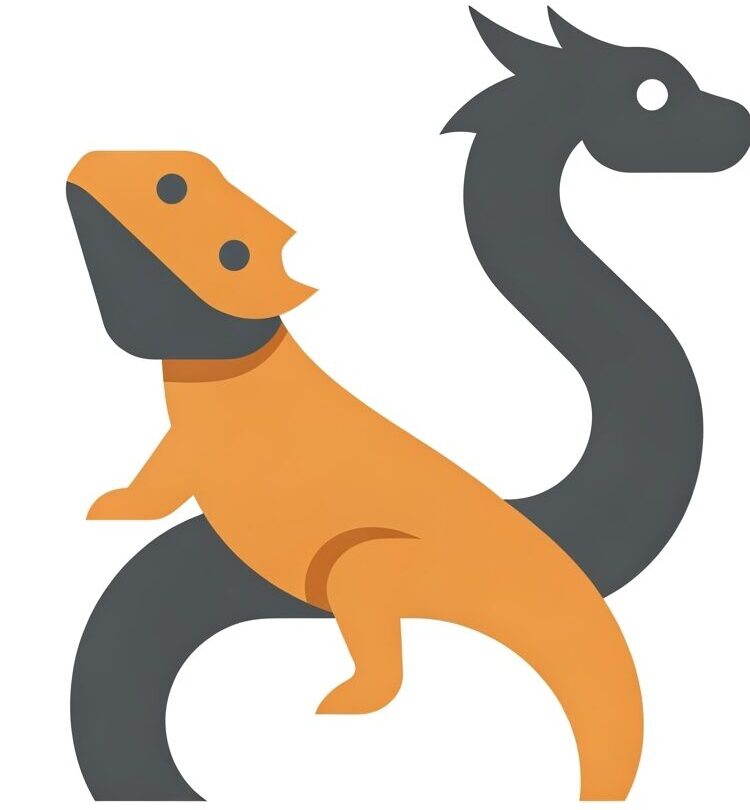Why is My Bearded Dragon Difficulty Shedding? Common Causes Explained
Seeing your bearded dragon struggle with shedding can be unsettling. You’re likely wondering if this behavior is normal or a sign of something more serious. This article will explore common reasons why your bearded dragon might be exhibiting difficulty shedding, helping you understand the potential causes and what you can do to help.
Understanding Difficulty Shedding in Bearded Dragons
Bearded dragons shed their skin periodically as they grow. Healthy shedding usually occurs in patches and doesn’t cause your dragon obvious distress. However, if your dragon is struggling to shed, exhibiting behaviors like rubbing excessively, pawing at stuck shed, or the shedding process seems unusually slow and incomplete, it’s worth investigating further. While occasional difficulty shedding can happen, persistent or severe issues often indicate an underlying problem that needs addressing.
Common Causes for Difficulty Shedding
Several factors can contribute to shedding problems in bearded dragons. Understanding these causes can help you identify potential issues in your dragon’s environment or health.
-
Environmental Issues (Low Humidity): The most common cause of shedding problems is inadequate humidity. Bearded dragons are desert reptiles, but they still require a certain level of humidity (ideally between 30-40%) to facilitate proper shedding. Too little humidity causes the old skin to become dry and brittle, making it difficult for your dragon to shed properly. The skin tightens and doesn’t loosen for proper shedding.
-
Improper Diet and Dehydration: Poor nutrition and dehydration can also hinder the shedding process. Proper hydration is crucial, as it keeps the skin pliable and helps to loosen the old layer. An unbalanced diet lacking in essential vitamins and minerals can also affect skin health and shedding. Without the nutrients to grow healthy skin, the shedding process suffers.
-
Stress: Stress can negatively impact a bearded dragon’s overall health, including its ability to shed properly. Sources of stress can include frequent handling, changes in the environment, loud noises, the presence of other aggressive pets, or inadequate hiding spots. When stressed, their body focuses on survival responses rather than normal bodily functions like shedding.
-
Vitamin Deficiencies: Specifically, deficiencies in vitamins A and E can lead to skin problems, including abnormal shedding. These vitamins play a critical role in maintaining skin health and facilitating the shedding process. Gut-loaded insects, or insects dusted with appropriate vitamin supplements, can help ensure your dragon receives adequate amounts of these vital nutrients.
-
Old Shed: Sometimes, shedding is difficult because a layer has already built up underneath the existing shed. This can happen because of the factors mentioned above.
When You Should Be Concerned
While addressing the common causes might resolve the issue, certain warning signs should prompt a visit to an exotic veterinarian. Seek professional help if you observe any of the following:
- Lethargy and Reduced Activity: A significant decrease in energy levels could indicate an underlying illness.
- Loss of Appetite and Weight Loss: This suggests a potential health problem interfering with normal bodily functions.
- Swelling or Redness Around Stuck Shed: This could be a sign of infection, especially around the toes or tail.
- Difficulty Moving or Walking: Stuck shed around the limbs can restrict blood flow and cause discomfort or even necrosis.
- Changes in Feces or Urates: This can indicate a digestive issue that impacts overall health.
- Open wounds or bleeding skin after shedding: This is a serious sign that the skin is unhealthy and needs medical attention.
What to Do Next
If you’re concerned about your bearded dragon’s difficulty shedding, take the following steps:
- Double-check the habitat parameters: Ensure the temperature gradient, basking spot temperature, humidity levels, and UVB lighting are all within the recommended ranges. A digital thermometer and hygrometer are essential for accurate monitoring.
- Observe closely for other symptoms: Watch for any other changes in behavior, appetite, or physical appearance that might indicate a health problem.
- Reduce potential stressors: Minimize handling, provide adequate hiding places, and protect your dragon from loud noises or other disturbances.
- Ensure proper diet and hydration: Offer a varied diet of appropriately sized insects and leafy greens, and provide fresh water daily. You can also offer supplemental hydration through misting or soaking.
- Consider recent changes: Have you changed anything in the environment, diet, routine, or tank mates recently? These can lead to difficulty shedding.
- Soaking the Dragon: Giving your dragon a shallow, lukewarm bath can help loosen the stuck shed. Never try to forcefully peel off the skin, as this can damage the underlying tissue. Only soak the dragon in a couple of inches of water.
- Consult an exotic veterinarian: If you notice any of the warning signs mentioned above, or if the shedding difficulty persists or worsens, seek professional veterinary advice immediately.
Conclusion
Difficulty shedding in bearded dragons can stem from various factors, ranging from environmental issues to underlying health problems. Careful observation, prompt action, and, when necessary, professional veterinary care are crucial to ensuring your bearded dragon’s health and well-being. Remember that online advice is not a substitute for a proper veterinary examination.
